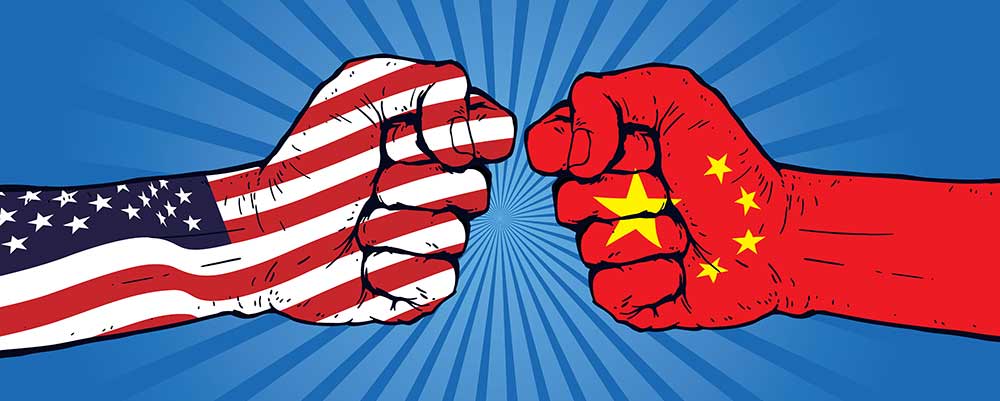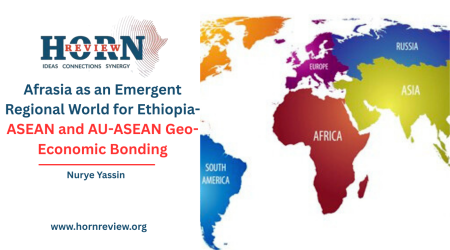
16
Apr
China is Navigating Trade Wars, Alliances, and Great-Power Competition
In recent years, the global geopolitical landscape has been dramatically reshaped by escalating trade conflicts, shifting diplomatic allegiances, and an evolving contest to shape the global order. Amid the strengthening protectionist policies of US President Donald Trump, China is adeptly transforming what is intended as economic coercion into a platform for reordering global alignments. Far from pursuing a reactive or isolated strategy, China’s manoeuvres in the wake of these trade measures reflect a meticulously calibrated plan that intertwines robust multilateral diplomacy, a deep and enduring strategic partnership with Russia, and the full exploitation of its vast industrial scale.
The Trump administration’s controversial trade policies have seen tariffs on Chinese goods increased to unprecedented levels. While these measures are designed to pressure Beijing economically, Chinese policymakers see the trade war as just one aspect of a broader struggle against perceived American unilateralism and inconsistent foreign policy. Beijing is now redoubling its efforts to reenergize diplomatic outreach across Asia and beyond. China’s attitude is aimed to be pragmatic, offering partners an image of stability and consistency at a time when Washington’s policy shifts have sown uncertainty among its traditional allies.
Central to Beijing’s strategy has always been the simultaneous development of alternative and non-Western-centric multilateral platforms. While Chinese outreach formerly focused on alternatives for the west, recent initiatives have broadened the geographic focus, emphasizing a balanced global engagement that spans Asia, the Global South, and even parts of Europe. This recalibration hints that China’s diplomatic actions are not merely reactive, but are instead elements of a long-term policy designed to harness every strategic advantage in bolstering its international standing.
A critical pillar of China’s complex strategy is its robust and long-standing alliance with Russia. Contrary to some U.S. policymakers’ hopes that Russia might be reoriented toward American interests, the Sino-Russian relationship has only grown stronger in recent years. Both nations share deep-seated mutual interests and a common strategic outlook, underpinned by a shared scepticism toward U.S. global leadership. Reports indicated that bilateral trade between Russia and China had surpassed $250 billion in 2023, a testament to the economic interdependence binding the two alternative powers. Moscow, particularly since the 2022 invasion of Ukraine, has leaned heavily on Beijing’s diplomatic backing and economic openness, which is further cementing the alliance.
This partnership extends well beyond the realm of economics. With both countries championing policies of non-interference and a critique of Western interventionism, China and Russia present a united front that challenges the crippling U.S.-led international order. Their coordinated stances in multilateral institutions and international forums illustrate a profound ideological and strategic alignment that defies American expectations of reorienting Moscow. Efforts by Trump-era policymakers to coax or illude Russia away from Beijing maybe proving to be not only impractical but also counterproductive. Even if a temporary pivot were conceivable, any gains would pale in comparison to the robust and enduring partnership that now underpins Sino-Russian relations.
Beneath the diplomatic and economic jockeying, the underlying dynamics of great-power competition remain governed by immutable laws of scale. History offers ample evidence: in the industrial age, the United States overcame traditional powers by leveraging its vast natural resources, larger population, and expansive domestic market. Today, China’s industrial system, with manufacturing output that surpasses the US by a margin, is similarly poised to challenge its longstanding rival. This enormous scale is complemented by rapid technological innovation. Chinese manufacturers have not only led in the production of goods like electric vehicles and solar panels but have also become front-runners in industrial automation. Recent data show that around half of the world’s industrial robots are now installed in Chinese factories, underscoring an aggressive, state-led drive toward high-value, high-technology production.
China’s expansive industrial base is further bolstered by sustained government investment and ambitious policy initiatives. Even as China grapples with challenges such as an aging demographic and debt levels that, while high, are comparable to those of other mature economies like Japan, its economy remains resilient. Policy initiatives aimed at spurring an “echo boom” among younger workers, combined with significant investments in automation and robotics, help mitigate demographic headwinds. For Beijing, the issues of slow growth or rising unemployment have not yet undermined its broader strategic position; rather, they are factors managed within the context of an economy that is, in terms of sheer scale and productive capacity, unrivalled.
The American response, often marked by overconfidence and an “America First” rhetoric that underestimates structural advantages, is increasingly seen as insufficient in the face of China’s rapid scaling and expansive production. US manufacturing is challenged by inherent limitations in domestic scale and by an industrial paradigm that has increasingly ceded ground to Chinese competitors. Although closing its markets to Chinese producers does deter their industrial expansion, revamping American production capacity is an altogether complex task.
The evolving dynamics among China, Russia, and the United States point to a future in which power is defined less by traditional military might and more by the ability to mobilize economic, technological, and industrial resources on a colossal scale. China’s push to leverage trade tensions to reinforce its diplomatic outreach is not simply about winning an economic conflict; it is about redefining the international order itself. By championing initiatives that marry production scale with technological innovation, Beijing is laying the groundwork for a multipolar world where U.S. unilateral advantages in innovation cannot compensate for its smaller manufacturing base.
Recent policy debates in Washington reflect growing concern that attempts to realign or “divide” the China-Russia nexus may prove futile. The enduring, mutually reinforcing relationship between Beijing and Moscow, backed by robust trade and aligned strategic interests forms a formidable obstacle to any U.S. strategy based on isolation or containment. Rather than isolating China through unilateral tariffs or unilateral diplomacy, the United States may soon reckon with the need for a fundamentally new approach, one that might see Trump’s “America-First” policy scrapped for one that bring US allies and institutions back to the table.
By Mahder Nesibu,Researcher,Horn Review










